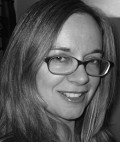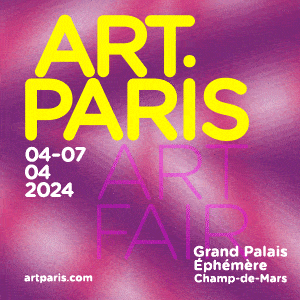Whitehot Magazine
April 2024
"The Best Art In The World"
"The Best Art In The World"
April 2024
October 2008, Asher Edelman Interview

Christopher Winter, First Cigarette courtesy Asher Edelman
Huge black and white photos fill a brownstone at 47 East 63rd Street. This is Edelman Arts, Asher Edelman's new gallery that opened last spring. One day recently I met with Asher to interview him about his ideas about art. When I arrived at the gallery, I took in the show as the gallerist Ashley called upstairs to announce my arrival. A few minutes later, we heard Asher yelling. Ashley said, "It'll only be a few minutes. When Asher yells between the floors, he's almost ready."
Asher Edelman:
From Wikipedia, the free encyclopedia
Asher Edelman is a former corporate raider who, along with Carl Icahn, served as the basis for the character Gordon Gekko in Wall Street (film) due to his 1985 takeover of Datapoint. [1]
In 1988, he taught a course called "Corporate Raiding - The Art of War" at New York's Columbia University, and then moved to Lausanne. In 1996, he acquired shares in the Societe du Louvre, a group with holdings in Taittinger champagne, Hotel de Crillon, Baccarat crystal, and the restaurant Le Grand Vefour. Returning to the USA, he became a fulltime private art dealer in the Upper East Side of Manhattan.
In May 2008 he opened his own gallery, Edelman Arts, in a four-story brownstone on East 63rd Street in Manhattan. Edelman Arts represents the work of Christopher Winter, Cathy McClure, Dennis Oppenheim, Thorsten Brinkman and Yasmine Chatila.
PH: Would you like to say a little bit about yourself and your background in the art world?
AE: A history of Asher Edelman in the arts. I began collecting in 1957 and bought my first painting in 1961. I bought drawings, and prints, and so on from friends of mine. I bought my first art books at age 12 which would've been 1951. I just had an instinct. It didn't come from a push, or a family who was terribly interested in anything except being stylish. The painting I bought in 1961 was from a student of Larry Rivers. Aside from that, I have Larry Rivers paintings for sale right here in the gallery right now. So, what goes around, comes around. In between, I collected fairly extensively and intensively. By the late 80's, the collection was pretty big, maybe a thousand, fifteen hundred works of art. I collected more or less contemporary works but continued to include Johns, and Rauschenberg, etc. I left the Wall Street world in 1988, and in 1991, I opened a museum in Switzerland, outside of Lausanne in a little town called Pully. There we showed what was then called contemporary art. It would now include postwar. We did a number of exhibitions including the first Roy Lichtenstein retrospective in Europe which went on to the Tate, the first Basquiat retrospective, the first Mapplethorpe retrospective, and so on. We did a whole series of things that were fun. I closed the museum in 1995. It's a long story, a good story, not a bad story, and I moved back to the states. I always had a place in the states but I was kind of gradually moving back between 1995 and 2000, more or less. I played a moment or two with being in the investment business again. I didn't want to do that anymore. I decided, well, what do you know? Well I know a little bit about art. And so I became an art dealer starting out with mostly Impressionist and Modern and gradually expanding it through Postwar and Contemporary. Although I'm awfully interested in antiquities and old masters typically I don't deal in them.
PH: Is there a particular type of art that you're interested in?
AE: All art. I think you come to art and you divorce yourself from your taste at least the first time you're looking at whatever you're looking at. Otherwise you close out and close down the systems that allow you to develop perception. That being said, I collect lots of different substrata. I had a big collection of minimalism, abstract expressionism, some pop, which interests me a bit less, european abstraction, european reality and so on. But what the gallery has settled down to do, and it was first by happenstance, but now by specific direction, is to have contemporary artists, young artists, who maybe ask more questions in their work than they answer. The work has to have all of the other qualities. It has to be very good work. But the work becomes, in addition to the other qualities, the idea of the beholder. It really doesn't necessarily want to make a point. It wants the looker to make a point from its puzzle. I'm interested in works that challenge the viewer in the way that he expresses himself to himself, or otherwise, while looking at the work. The identification with what's in the work is the interesting part for me as the dealer. Virtually all the artists I represent end up in one way or another asking more questions than they answer. They provide an entrance for identification for the viewer which in turn provides the viewer with his own identification.
PH: Are you interested in narrative in art?
AE: Well, I'm interested in narrative especially when the narrative gets taken up by the viewer. You know it can look like a movie, as the work certainly here now does. But the movie doesn't end on the screen. It ends up in the head of, and begins in the head of, the viewer. So it's narrative and it's not. Its narrative with a question mark at the end of the narration. You participate in it to the extent that you define yourself. That's what I really mean. That's what I do in the gallery. I collect a great deal of that too. And I collect more broadly than just that.
PH: What led you to open a gallery now?
AE: You know I had a very good secondary market business, and still do, providing probably more professionals with pictures than private people, and also providing good art fair galleries with materials, and other galleries with materials, and private as well, especially for the very important works. Having always been a contemporary collector, I became more and more interested in sponsoring contemporary artists who interested me. And the platform certainly for the latter and ultimately for the first as well if you're going to deal with more private people, really was a physical gallery. I'm not that excited about the platform of art fairs. I'm not against them. But I think it's a very instant take and I think that the art that I deal in, as you can see, is a little more complex than instant take, including the secondary market where you see a bunch of Warhol dollar signs and such. Also, having a place that is comfortable is important because eventually we'll furnish the place, and let people have a place to sit, and even have a cup of coffee. So having a place which is slightly a salon, and also a place to see things and not just to sell them, and whose walls aren't white, and where the walls won't push you out, but instead are gray which perhaps draw you in, was what I thought suited the art that I was dealing in. It's that simple.
PH: Are you interested in seeing how artists' work develops?
AE: Of course, I've always been interested in that. I always collected the artists whom I thought we're interesting to me, and I always collected the progression of their work.
PH: Does knowing an artist, and hearing how they talk about their work, change how you view their work?
AE: No. Art begins by being visual. Once you have dealt with the visuality, which is really what it's about, I feel certain that it's not a bad idea to deal with the intellectual, historical, and social sides of the art. But as it begins with the visual, it's almost of no concern what the artist thinks it does or anything else, until that has been stepped through. So, yes, I do get to know the artist, And yes, its always very interesting later, as to what they think about what they're doing, But my kind of artists, for this gallery, don't think about their work that way. They think about it as being very visual. There is a psychological undertone but it's not as planned as maybe certain other art is. Although it looks planned.
PH: I can see what you mean. Like some work comes with a lot of text or very pinned down definitions of what it is.
AE: Yes. Exactly.
PH: Are you often surprised by something that captures your interest?
AE: No, because it's easy to capture my interest.
PH: Have there been particular shows that have had a big impact on you?
AE: Well, you know, I'm interested in everything, If you're interested in surrealism, seeing the Dali show is useful. I mean it has a special impact. I've seen so many great, great, shows - even launched some myself. A defining show in my mind was Henry Gehdlzahler's show at the Metropolitan in 1969, when it was the first real contemporary art in a museum in America. I mean BIG...Henry Geldhzaheler was a curator there and he did a show of astract expressionism and everything else that had been going on. It took up a large part of the museum and it was certainly an influence in the sense that it was a big, public exposure to big pictures that were pretty great. Pollock, to Kline, to DeKooning, and some Pop as well. There were no museums that presented contemporary art at that time. The Whitney to a degree. I mean they were chugging along a little bit. But in 1964 they were still just a little room off the Modern.
PH: So, it sounds like you've been in the art world for awhile. I'm curious, how has the art world changed from when you first became involved in it? Is it more fun now? Was it more fun then?
AE: The art's always fun. I mean the art world was. Its never been very gentlemanly. It's kind of a trashy crowd of people. In the dealer business, that is, for a lot of reasons. Some of them simply being that they don't have a clue about business. There are many others now who don't have a clue about art because it's become such a fashionable and profitable game in some cases. But essentially it has become rather crass as a real business. There are still all of those things. There are still those who are courtly, and I don't mean courtly in the social sense. But the courtly in a nice sense in relationship to the art dealers around are few and far between. I mean it's like fashion. It's a hype world. We try not to do that here. Its changed radically.
PH: It seems that work has to have a lot of impact very quickly. Do you try to generate that?
AE: Well, people don't look at art anymore. People used to go to galleries. Now they go to art fairs and auctions because it just takes a few hours. I used to spend two days a week all of my life until I was in my 60s, looking at art. Not reading about it, not listening about it, looking at it. I don't know many dealers who do that anymore.
PH: Are you interested in art criticism?
AE: Only when it's bad. I think there's too much favorable art criticism out there.
PH: Do you think bad art criticism may be more challenging, forcing people to think about things more?
AE: No. I think it brings people into the gallery. I mean if you look at MOMA, every article says this is wonderful, so beautiful, they did such a good job. In the first place it's bullshit. But forgetting about that, MOMA themselves has asked the critics to please be a little more critical because no one's interested in reading it anymore. And I love bad reviews. Now my artists don't. But I love bad reviews. I recommend strongly you read Mrs. Mullarkey's, I call her Mrs. Nonsense, article on the Chris Winter exhibition we did at Salandaer O'Reilly, probably 2005 or 4. Anyway, Chris Winter, Mrs. Mullarkey, The New York Sun. I want you to read that. I sent it to 2000 people once she wrote it. It's so nasty. Oh, it's scathing, and stupid. It was wonderful. It sold the whole show. It's very ncie to get an insightful, good review in Art in America or whatever, and we do. Our artists get that. But I must say, maybe you shouldn't quote me, but I'm really more amused by the other.
PH: What do you think of public art?
AE: One of our artists is an artist who does a lot of public art and its beautiful. I think that it's a little bit more about engineering, politics, budgets, and presentations, than it is about creating a work of art. To really be an artist, and to acclaim this one, and to treat it as one, and be one, you really have to create work that's private. And you have great work that's private because you're not beholden to a bunch of engineers and architects and city planners. So, I think it's fine. If you're around Barcelona it's done very well. And if you go around Wichita, Kansas, it's not. It's fine.
We wanted to put Dennis Oppenheim on Park Avenue when we did his show and he was turned down because he was too startling for them. He wanted to put up these big traffic cones which were twenty-five feet high.
PH: It would've looked great there.
AE: It would've looked fabulous. But you know, 'oh well....' And I know all the people so I can't get too extreme but it was just ridiculous. So we put up quite a nice piece down on Union Square if you pass by there which people like a lot which you also wouldn't have up here. Anyway...
PH: What do you think that art is for?
AE: It's an elitist sport. I mean that's what it seems to be. It's becoming something which is 'buy your prestige at the auction house.' You too can become an important person because you can have a copy of the same Warhol your buddy does and the museum does. I don't think that's what it's for. I think it's for the expression of the artist and for the social circumstances and for the beauty, pure beauty. It doesn't have to be an expression of the collector's ego.
PH: Would you like to say a little bit about the artists you're showing?
AE: Yes. But I would much rather give you the book because you know it's something we all worked on. I can say a few words but you should take the catalog. We have books on all the artists. In the case of Yasmine who is our present artist, she's very interesting. This is her first New York gallery show, certainly her first solo gallery show anywhere. She's a Columbia arts program masters graduate and she was a painter for awhile and then decided to do photographs. Because she was a painter, some things have happened in the photographs that are fun that other people probably couldn't do as well. She does these surveillance photographs which you've seen as you walk through. The people are more or less obfuscated as to who they might be. Their noses changed a bit, or their ears, or something. And then, typically, the windows of the buildings are changed. Some of them are like the film called Rear Window, the Hitchcock film, a couple of them have that window in it. Ok? But they don't. She put it in. And the facades of the buildings are changed. She takes the facade of a building and puts it on another building. And often, the buildings are moved around the city. So you have a big picture of City Hall, you have the building over here, and you have the building over her -- they don't exist here and there. But because she was a painter, she's terrific painting with pixels. And so they're seamless. They really look like the buildings are there, and the facade is there, and the windows are there. The only thing that's for real is the action. Isn't that fun? And that really becomes about the viewer as they go around.
PH: Well. thanks a lot.
AE: Thanks, it was fun. Well, I enjoyed it. Thank you. Take a walk upstairs and you can ask them if they have any stories about me that they'd like to tell you about. Tell them you're doing an interview.

Yasmine Chatila, Batchelor courtesy Asher Edelman

Patty Harris
Patty Harris lives and works in Brookyn, New York.
She has been showing in New York since the mid 80s, as well as internationally. Recent shows include Exit Art and PS122. She has written for various downtown publications.



 HI RES.jpg)








